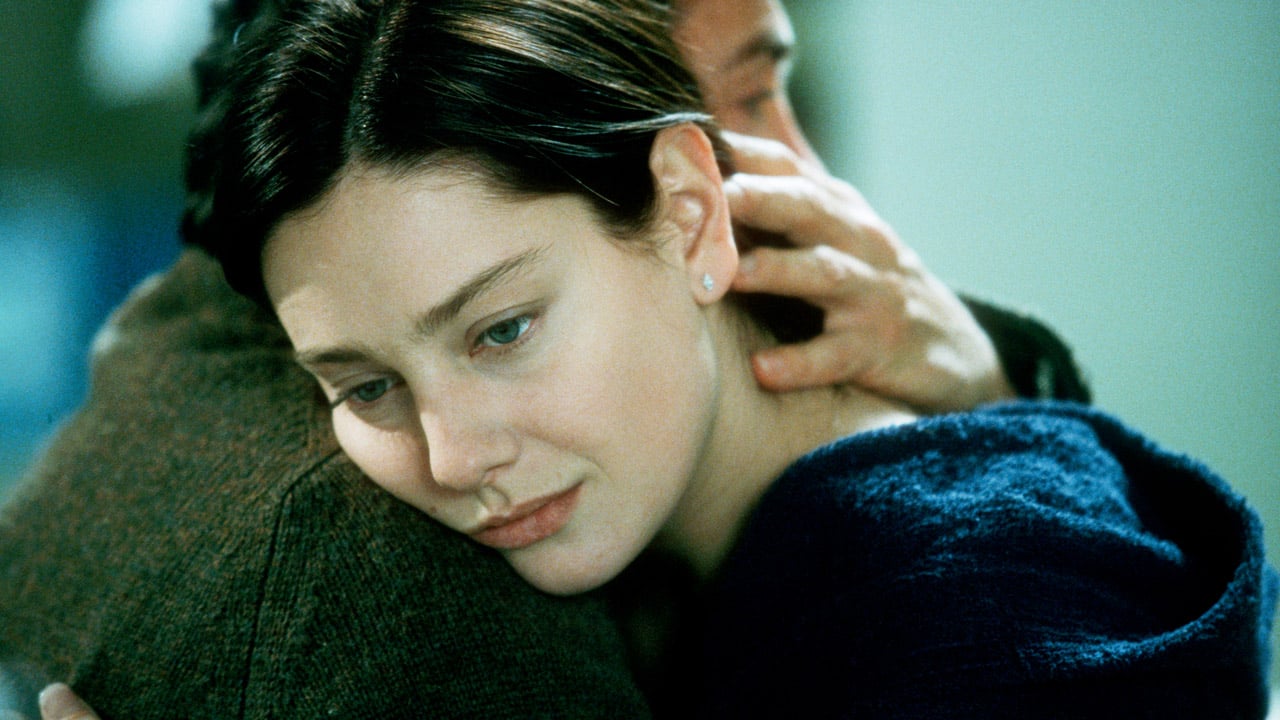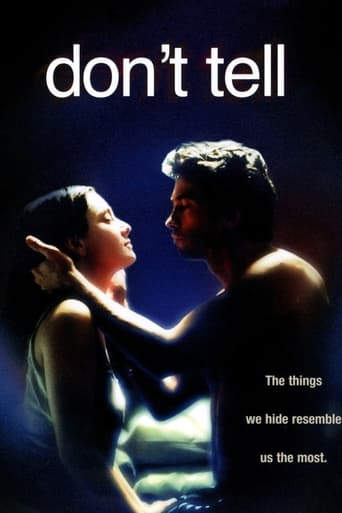

This is How Movies Should Be Made
... View MoreIt's a mild crowd pleaser for people who are exhausted by blockbusters.
... View MoreI didn’t really have many expectations going into the movie (good or bad), but I actually really enjoyed it. I really liked the characters and the banter between them.
... View MoreWhile it doesn't offer any answers, it both thrills and makes you think.
... View MoreSabina is a woman who seems to have it all: a job she loves, a nice boyfriend, and a great apartment. Yet, Sabina is carrying a heavy burden in her heart. It all comes to a head when she has to make a decision about the death of her parents, as we witness at the start of the film. All the bottled emotions are struggling to come out as she decides to spend Christmas with her brother Daniele in America. She wants to see her older sibling in order to make sense of her past and get closure with a horrible past.Sabina's boyfriend Franco, an actor, is selected to be in a soap opera. Being a theater actor, he is not completely satisfied with the idea, but being realistic, he has to compromise. Sabina, in parting, asks Franco not to see other women while she is away, knowing well the way things are in the world where Franco moves.Instead of being a joyous reunion, both siblings show a restraint in the way the visit develops. Daniele, who is a professor at an American university, plays the tour guide, pointing different aspects of the place he now calls home, but he never mentions anything about his own childhood. It takes a while for Daniele to open up to Sabina because she wants to get to the bottom of the secret that has damaged them both for life. Both, it turns out, are the victims of family sexual abuse by their father, an ugly situation perpetuated by the mother, who knowing about it, prefers to keep it hidden. When the truth comes out, we watch in horror scenes from both siblings childhood.Cristina Comencini, the author of the novel in which this film is based, adapted and directed with sure hand. She is the daughter of the distinguished Italian director Luigi Comencini. She has learned well as she sets her story with great precision, creating characters that one can relate to.The best thing in the film is the work of Giovanna Mezzogiorno. She brings life into Sabina, something that with another actress might not have been as easy. Ms. Mezzogiorno is simply splendid because she makes us care for this wounded woman who is searching for closure in understanding what was done to her at an early age. Equally excellent are Alessio Boni, who appears as Franco, the boyfriend, and Luigi LoCascio makes an impression as Daniele. Both these actors continue to surprise.
... View MoreThe director has written 4 books and directed 7 films but this is her first film based on her own book. She said it has been a challenging task for her to direct this film because one has to betray the book while directing its film version. It has been a difficult task for her to cut out many written in her book.In general, it's a well-done film about many unusual relationships: family relationships (including father-daughter, mother-daughter, father-son, mother-son, brother-sister relationships) involved in pedophilia, lesbian relationship, co-cohabiting couple relationship in an adultery, divorced couple relationship in an adultery. Exactly because of such a wide angle about relationships, the core element about victims/survivors of pedophilia has been dealt lightly but conscientiously.Very good acting from the supporting actresses Angela Finocchiaro and Stefania Rocca. The acting of Giovanna Mezzogiorno is less natural. The anxiety she delivers in this film is not that of being in a pedophilia victim-hood, but more of that of her impersonal and emotionless involvement.Two scenes I found unnecessary in the film. One is the (imagined) kissing scene of Emilia and Sabina. Enough evidence has been given (though later) suggesting Emilia is a lesbian, so no need of showing this scene. Another disturbing scene is when Franco was watching Sabina playing with his children. I found it redundant to show the detailed scene of Sabina's conversation with the children.In addition, the plot is well-linked through narrating all correspondences (letters and emails) between the protagonists. A neat idea.
... View More'La Bestia nel cuore' ('The Beast in the Heart' released in the USA as 'Don't Tell') is an intense Italian film written and directed by Cristina Comencini that tackles subject matter so visceral that the telling of it requires complete concentration from the audience in order to feel the power of the impact at the end. It is a tough film to watch because of the story, but it is a superb film to watch because of the excellent cast and production crew.Sabina (Giovanna Mezzogiorno) is introduced to us in a cemetery where she is arranging for the interment of her dead parents: the mood for the story is subtly set. Sabina is a dubbing actress for translating films into Italian, a 'sell-out' acting job compared to the life of her live-in boyfriend Franco (Alessio Boni) who is a stage actor being tempted to accept a role in a TV series which pays more money than the stage. Sabina confesses she wants to get pregnant, she does, and with her pregnancy she begins to have nightmares of shadowy childhood memories. She is afraid to discuss these with Franco, or with her best friend Emilia (Stefania Rocca) who is blind and has been in love with Sabina since childhood. It seems the only person with whom she can confide her secret fears is her brother Daniele (Luigi Lo Cascio) who has moved from Italy to Charlottesville, VA where he is a professor at the University and has a happy family life with wife Anna (Lucy Akhurst) and two children. Sabina flies to the US to be with her brother and in the course of their reunion the two siblings uncover the beasts in their hearts: sexual abuse from their father now departed. How this discovery alters their lives is the dénouement of the film.There are many subplots - infidelity on the part of Franco while Sabina is away, a lesbian relationship that develops between Emilia and another of Sabina's friends Maria (Angela Finocchiaro) - and Comencini draws subtle parallels between these twists along side the main story of incest discovery. Yet without concentration, these subplots can become distracting.The acting is on the highest level and the changing locations are shot by cinematographer Fabio Cianchetti with sensitive respect of the nuances of suggestion encased in each place. The uncredited musical score is an admixture from Robert Schumann's piano sonata to contemporary works and serves to heighten the actions and mood. In Italian with subtitles. A film well worth watching.
... View MoreQuite interestingly, this movie is based on a novel written by director Cristina Comencini herself. It is the story of Sabina (Mezzogiorno), a woman that suddenly discovers that her late father had sexually abused her. As a consequence of this epiphany, she flees to join her brother, now a professor of classical literature at the University of Virginia. During that fortnight she realizes she was not the only one in the family that had gone through such a nightmarish experience. Meanwhile, back in Rome, her partner is unfaithful to her and her two best girlfriends (one of whom is blind and the other has just been left by her husband for a girl of 20), fall in love with one another.Yes, this is a bunch of material to work with and to squeeze all of it in a single 100' movie is a bit risky. Actually not all is credible. For example, the parallel story of Franco, Sabina's boyfriend, is not really interesting. Sabina foretells he will go to bed with the first girl he meets while she is away and quite obviously this proves right: a young girl forces her way into Franco's apartment on New Year's Eve and when he tells her to go, she stays because she knows there won't be taxis available (what the hell should the guy have done?). All in all the character of Franco is a bit dumb.The Sapphic love story between the blind girl and Sabina's colleague could have been weird, but is interesting instead, most of all thanks to the quality of the two actresses (Rocca and, especially, astounding Finocchiaro). Beautiful Giovanna Mezzogiorno, not surprisingly, does a good job.The main issue of the movie, incest, is focused in the right way, not too melodramatic, but rather balanced between Sabina's nightmares and her brother Daniele's quiet hate and rational will to carry on. Unfortunately, the ending is not really interesting. Plus, Lo Cascio is correct, but nothing more.I liked the flashbacks from what seems to be an apartment in the 70s: a dark, dusty place, with seemingly no windows at all, a perfect place for perpetrating sinister family crimes and bearing them silently (the character of the mother). The Charlottesville segment is convincing, if a bit long. It is not a digression, but rather the most important section of the story. During Sabina's US stay we almost forget about her connections with the characters she left in Rome, and for half of the movie the stories run parallel. Later they suddenly reunite, which results in something of a clash.In a sequence, Comencini pays homage to some great Italian directors of the past (I caught a glimpse of pictures of at least Fellini, De Sica and Pasolini). Ironically, the sequence is set in a TV studio where a laughable series about a hospital is being shot. TV fiction is explicitly criticized, although later in the movie this attitude changes a bit (Franco, who has worked on the stage and for the cinema, accepts the part of an anesthetist with stupid dialog and even says they occasionally shoot scenes with virtuoso camera movements!).Comencini is not a Fellini or a Visconti, nor are her Italian colleagues of her generation. But it is not their fault: cinema and the movie market have changed a lot since then. But as long as correct, high standard movies as La bestia nel cuore are produced in Italy, there is nothing to complain about. Go on like this.
... View More